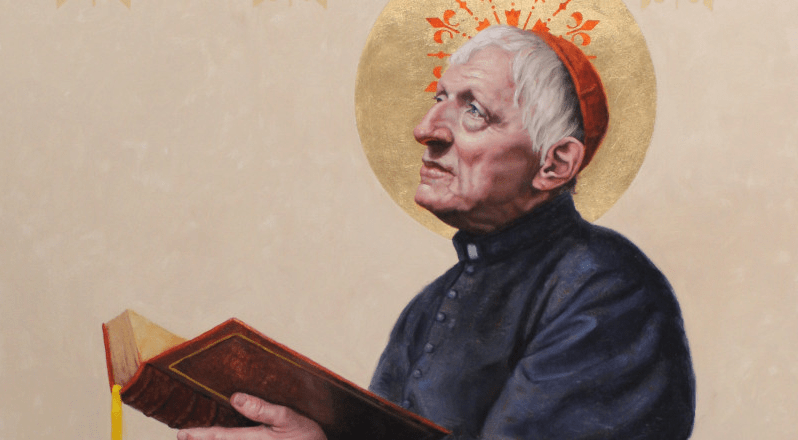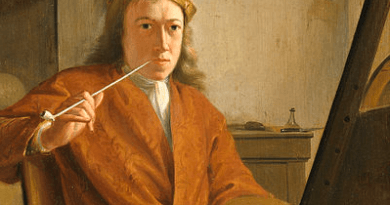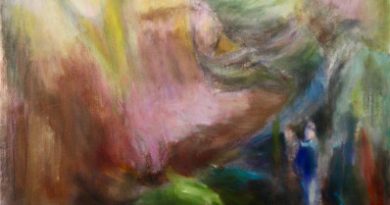Painting Process One – Samuel Shelton
In this series of articles, Samuel Shelton offers details about three different and unique approaches he uses in his work. The two paintings presented here, and the techniques used, are… from a commissioned project he did for a church. Note his incorporation of traditional symbolism with his own unique creative expression. The articles about Techniques Number Two and Three will follow shortly.
Process #1
In these paintings I have used the following colors: Treehouse White, Ivory Black, Ultramarine Blue, Transparent Red Iron Oxide, Hansa Yellow, Red 254 and Burnt Umber. The process for these paintings was rather straightforward. I began with a neutral light gray ground on panel, each 24×30. Once the pencil drawing was done, I laid in the gold leaf halo and then sealed the drawing with diluted acrylic medium. Next I went to straight color, starting in one section and finished that section before moving to the next. A sort of alla prima process over the course of a few weeks for each painting. In order to keep my paints workable for 3-4 days so I could revisit each section I added a little clove oil to each nugget of paint on the palette. It takes barely any to prolong the drying time for each color, but burnt umber takes a bit more clove oil. I printed off a large photograph of the models, courtesy of Walmart, and before laying down color on the canvas I would put my mixture on the tip of the palette knife and hold it up to the photo to color check. I would accentuate certain colors and change the model in various ways to fit my taste and in order to not be a slave to a photograph, but color checking to see if I was in the ballpark made these paintings go a lot quicker. This is the most direct method of painting I use.





